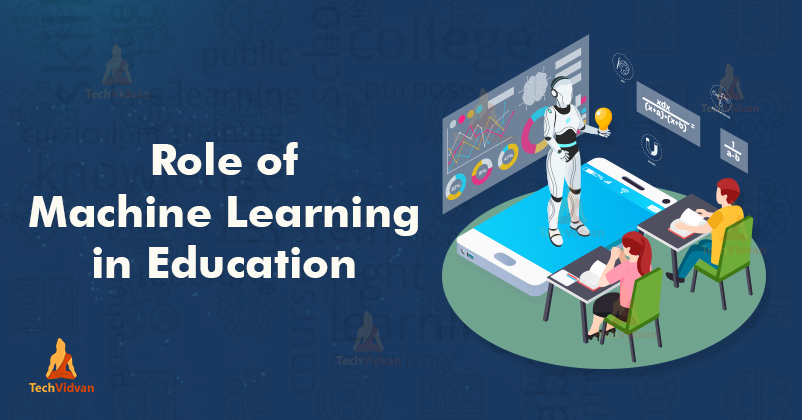Role of Machine Learning in Education Industry
With artificial intelligence reaching new levels of advancement and complexity, machine learning is starting to have a much bigger impact on classrooms and education in general. But what exactly is the role it plays? The answer to this lies in truly understanding both the potential and limitations of machine learning.
What is machine learning?
To determine the role of machine learning in education, one must first know what machine learning is. Machine learning simply refers to computers that can learn of their own accord: for example, the old AlphaGo AI was programmed to watch Go matches from real players, and learn how to better play the game in doing so. While it was programmed to learn how to play Go, the programmers did not actually program how to play the game into the machine. The machine learned to play more effectively by watching other people play. This is machine learning.
This tutorial helps you in learning machine learning and its role in education industry. To add more to it, you can write something of your own, or trust in professional essay writers. Either way, this resource is sure to be beneficial.
How could a learning machine assist in education?
It goes without saying that a computer will always learn more efficiently than a human. They can store more information and are incapable of forgetting anything that they know. They can also assimilate information much faster than a human. What a human professor would take weeks or months to learn, it would take a computer to learn in hours or days.
This means that a computer could learn the nuances and educational needs of individual students much more quickly than a human teacher. It could analyze their performance and quickly zero in on the things that need to be improved, and unlike a teacher, it can divide its attention between all students without issue.
However, this is not to say that machines could just replace human teachers. Teaching is a cultural aspect of society after all, and teaching would no doubt be better received by students if a human teacher they could relate to was involved.
That said, this is not the only way machine learning could aid in education. A computer can also grade work, be it homework or tests, almost instantly, saving a professor a great deal of time. The most effective role for machine learning in education would be that of an assistant to a human professor, for a particular reason, which we’ll discuss next.
The art of human understanding
At some point in the far future, AI may be able to understand the more nuanced facets of humanity. Perhaps they will be able to understand human emotion, our fallacies or weaknesses rooted in our existence as sentient, free-willed people. But as of right now, machines cannot do this in any meaningful capacity. Unfortunately, understanding all of those things is a major aspect of teaching.
The art of teaching another person involves understanding aspects of their humanity that a machine simply cannot. A computer can understand rules and statistics: it can optimize its performance to better teach things on paper. But it cannot understand a student’s lack of motivation due to issues at home, a lack of self-confidence, or other personal issues. Those are problems only a human teacher can relate to, and they are problems only a human teacher can appropriately address.
This is precisely why we cannot simply replace human teachers with computers capable of machine learning. They are far better suited to assisting a human teacher in their tasks than outright trying to replace them. A combination of both human teaching and machine learning would be the optimal course of action to take in this scenario.
Ultimately, machine learning could one day do much more than it is capable of right now. However, with its current limitations in regard to understanding the human psyche and motivations, its role in society cannot be to simply teach. It does not have the necessary capacity to take on the full role of professor.
Instead, the current capabilities of machine learning make such computers far better suited to playing the role of teacher’s assistant. A computer’s ability to analyze factual data and performance, as well as identify weaknesses and closely judge the performance of hundreds or even thousands of students and grade assignments instantly makes a computer the ideal assistant for a teacher.
With those types of tasks now off the professor’s shoulders, they could dedicate more time to personal tutoring or specializing lessons. And by combining the two, it is almost undoubtedly certain to greatly increase positive results in students.
Learn real life applications of machine learning to gain more insights of this booming domain.

